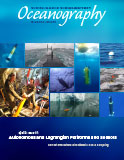Article Abstract
As part of a school-wide course transformation project at the University of Hawai‘i to improve student learning and retention, multiple geology and oceanography instructors are introducing two-stage exams in their undergraduate courses. The first stage is the traditional, individual exam. The second stage is collaborative, in which groups of two to six students answer the same (or a subset of) questions posed during the first stage. We analyzed n = 289 scores on 14 two-stage exams in seven sections of five unique undergraduate courses taught by six different instructors. Two of the courses are categorized as oceanography and three as geology, although all courses cover both terrestrial and marine content. For each exam, the mean group score (stage two) exceeded the mean individual score (stage one), and all gains were statistically significant at α = 0.05. Overall, the mean individual score was 73.2%, with a standard deviation of 15.0%. The mean group score was 89.6% with a standard deviation of 9.3%, reflecting an overall improvement and a narrowing of the achievement gap. Students who scored in the bottom quartile of the individual exam experienced the greatest improvement from individual to group (increase of 29.9 percentage points). This compares to a lower, but still statistically significant, increase of 5.5 percentage points for students in the top quartile. The majority (83%) of groups had a group score that exceeded the scores of all individuals in that group, which argues against the theory that the increased group score is due to group members simply copying answers from the top-performing individual in their group. A formal parametric (z) analysis reveals that the group scores are systematically higher than the maximum individual scores, indicative of a systematic (non-random) process. We interpret this process to be collaborative learning during the group stage of the exam. A cohort analysis reveals that groups containing all combinations of high- and low-performing students during stage one experience statistically significant mean gains in exam scores, and selecting groups to include a mix of high- and low-performing students is a highly effective way to proactively reduce the achievement gap.

